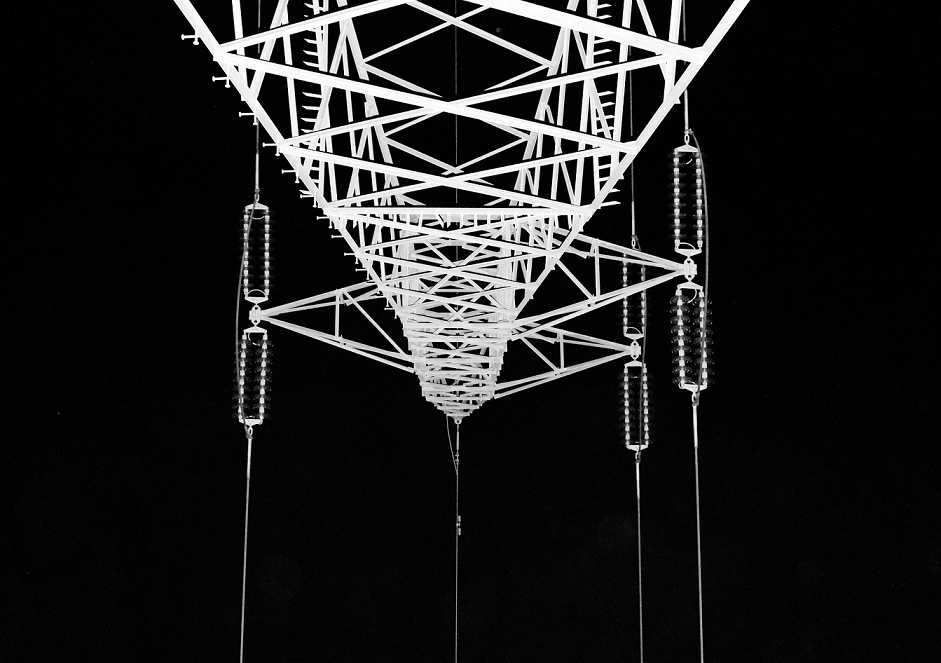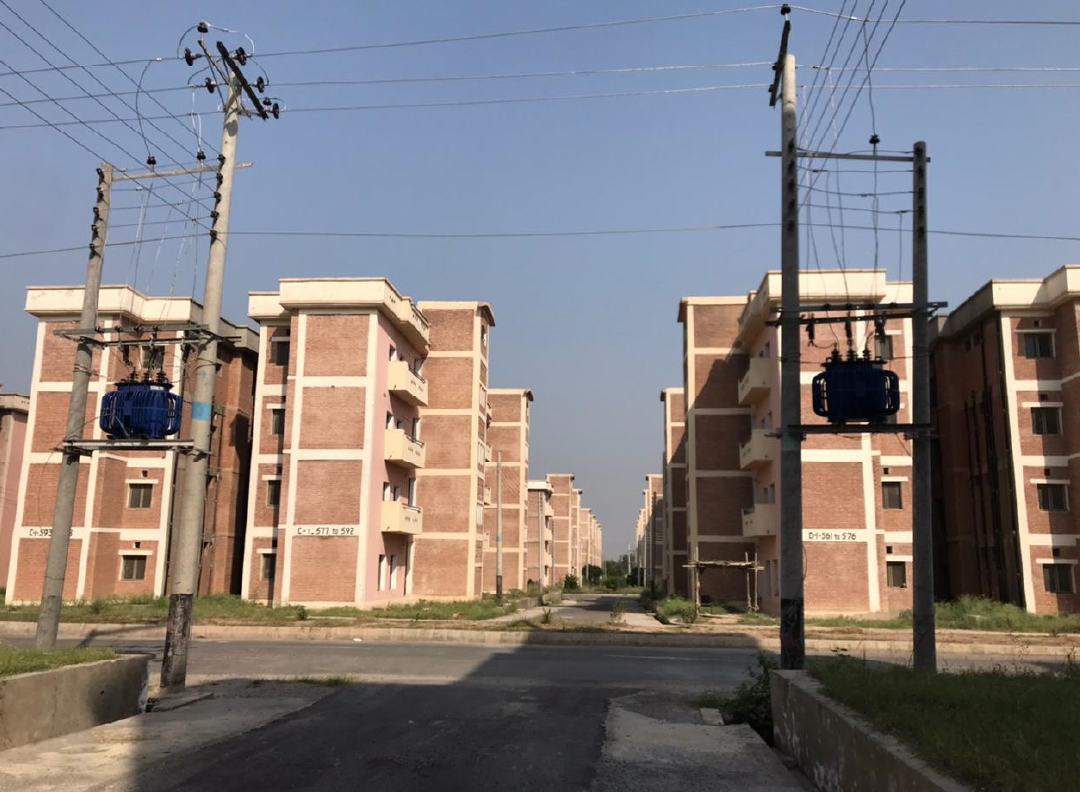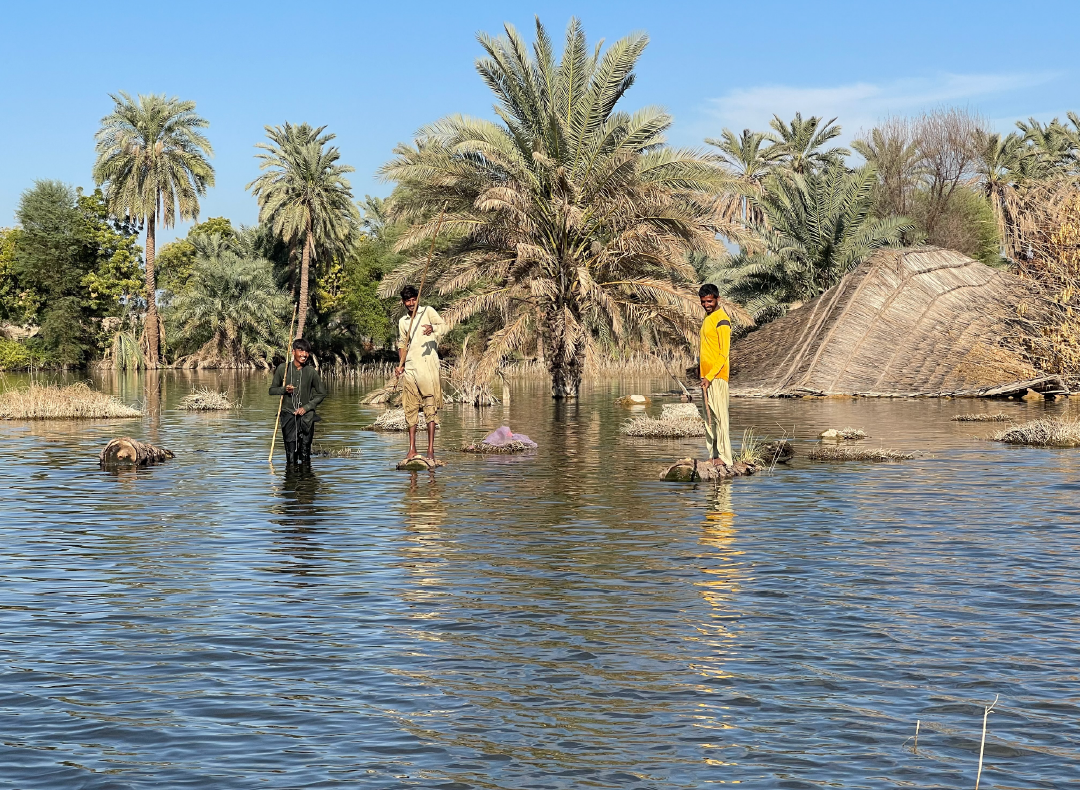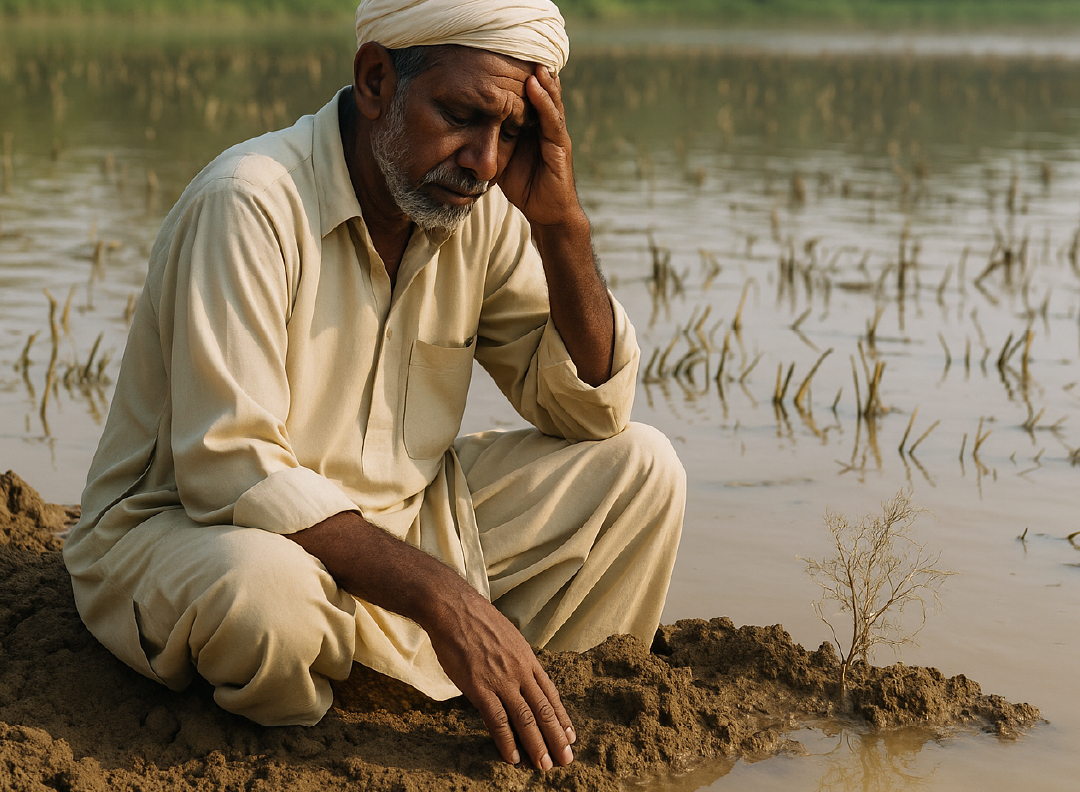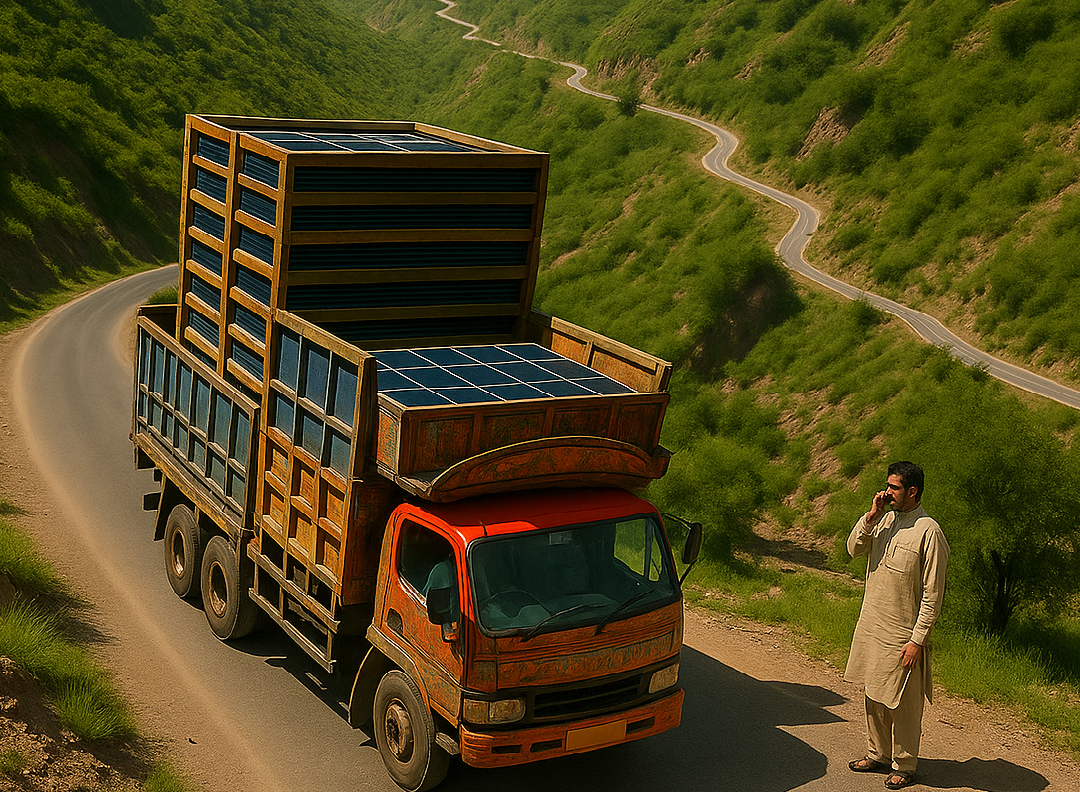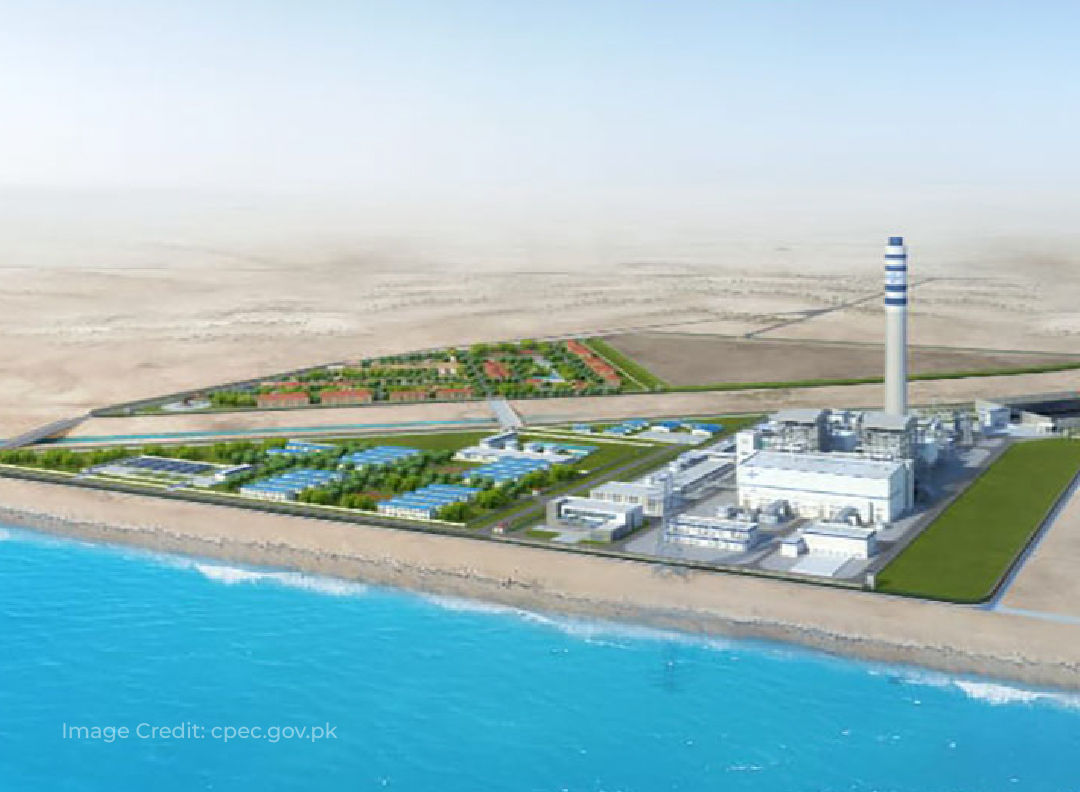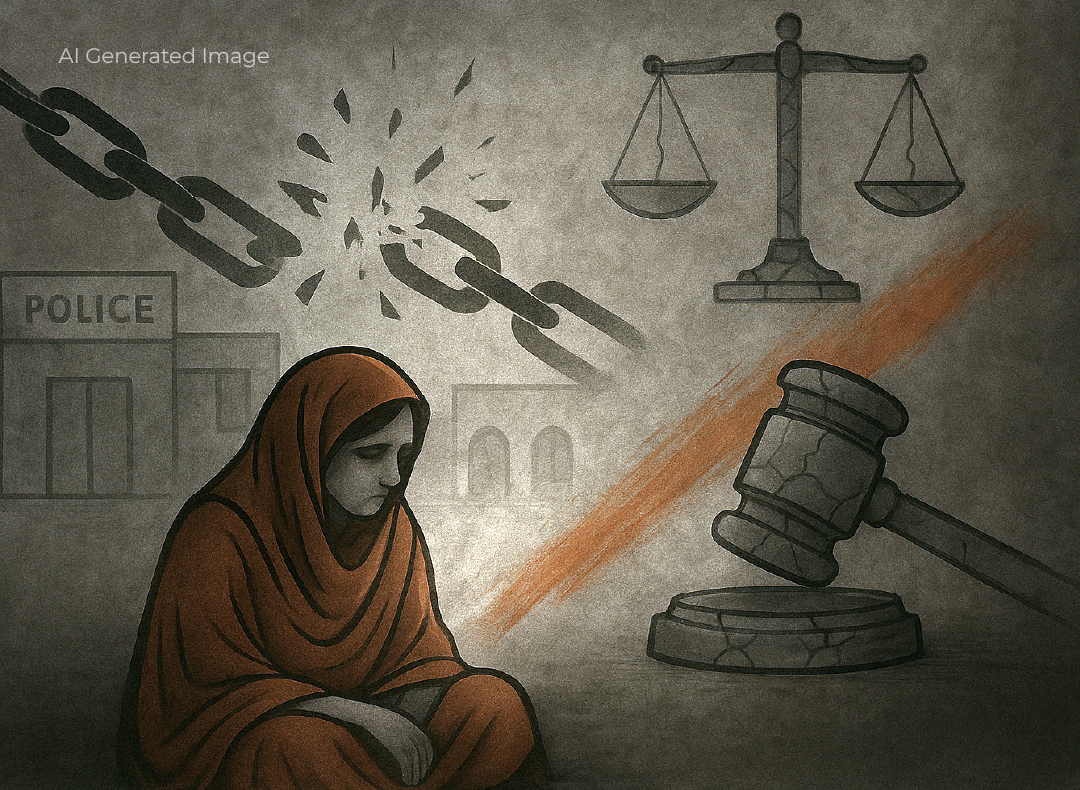Zorshing is a village located three kilometers from the city of Basham on the Karakoram Highway. Sixty-two years old Bazir Khan, who is a resident of the village, says that a few days ago, some people came to his village and immediately began setting up telescopes and measuring tapes. When the visitors were asked who they were and what they were doing, they identified themselves as government officials conducting a survey to install a tower for the Dasu Hydropower Transmission Line.
However, Bazir says, in this hamlet of just 14 houses there is simply no space and installation of transmission line tower there was beyond comprehension. He immediately went to a local social worker, retired Captain Abbas Khan, to inform him about the situation. He asked Khan to communicate their concerns to the authorities, requesting that the tower should not be installed amid the houses because if the transmission line is laid here, it would become impossible for them to continue living there.
According to Bazir Khan, at the request of retired Captain Abbas, Assistant Commissioner Basham Muhammad Adnan called a meeting on Nov 29 with him, other complainants, and representatives from the National Transmission and Dispatch Company (NTDC).
“In the meeting, we (the residents of Zorshing) demanded that the tower be installed farther from the village but the assistant commissioner and NTDC officials said that our demand would be considered but they did not give any assurance.”
The village of Zorshing consists of very poor families, most of whom have men working as labourers in Karachi or they keep livestock.
Not just Zorshing, the proposed transmission line route is affecting a vast area of Shangla and Mansehra, where people living in rural areas are deprived of basic facilities and struggling to survive with limited resources.
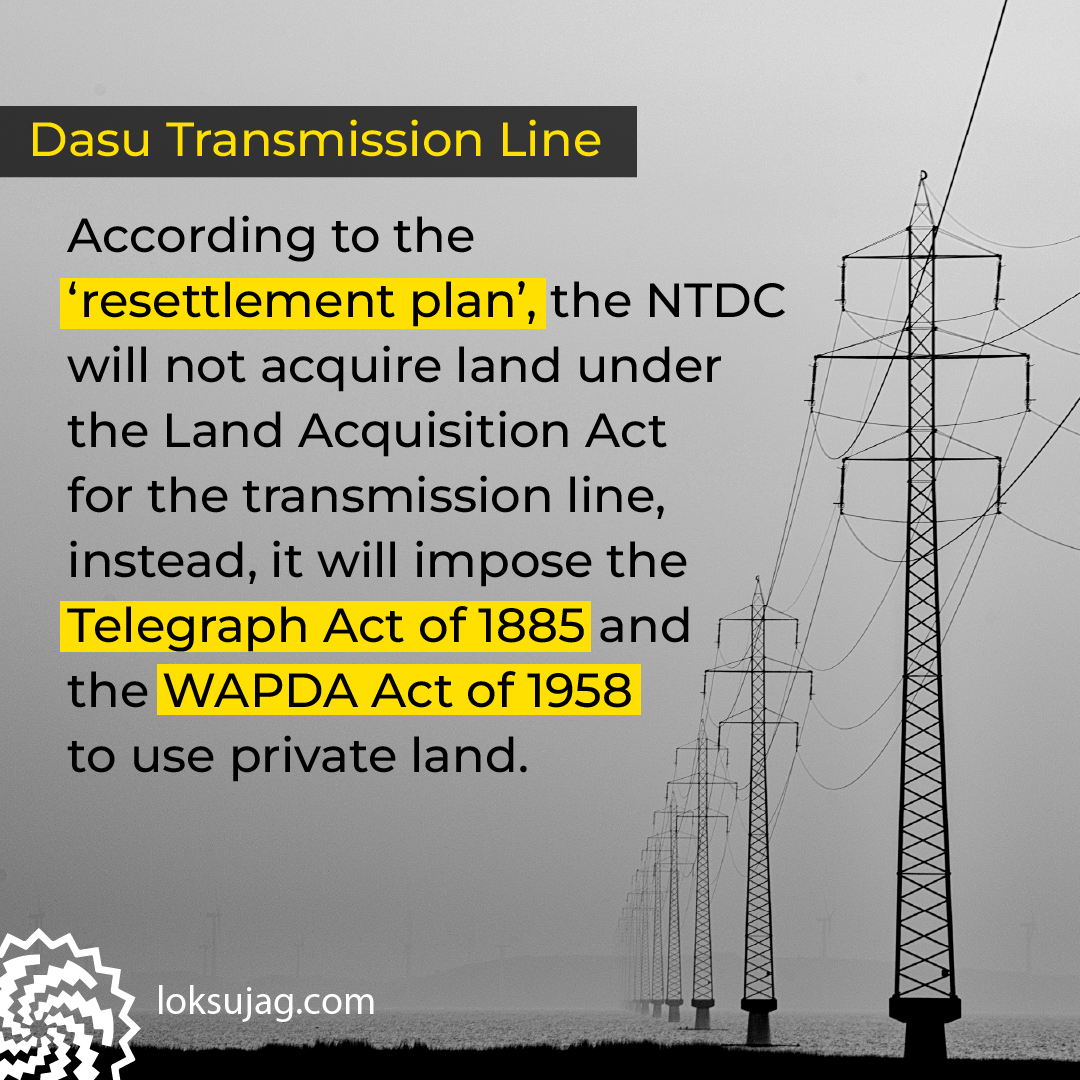
250km transmission line from Dasu to Islamabad
A transmission line is being laid to connect Dasu Hydropower Project of 4,320MW in the Upper Kohistan district of Khyber Pakhtunkhwa with the national grid. This task has been entrusted to the NTDC, a subsidiary of the Water and Power Development Authority (Wapda).
World Bank is providing financial assistance for this project, and according to the official site of the NTDC, the 'Resettlement Action Plan' outlines the installation of a 250km long 765kV (high-voltage double circuit) transmission line from Dasu to the western grid of Islamabad. The transmission line will pass through eight districts: Upper Kohistan, Lower Kohistan, Shangla, Battagram, Mansehra, Haripur, Abbottabad and Attock. The revised report of the plan states that 674 towers will be erected along the route, each tower standing about 83 meters tall and occupying an average of 400 square meters. The transmission line’s right-of-way will be 80 meters wide.
The proposed transmission line will affect nearly 5,000 acres of land, of which 2,190 acres is barren. The remaining land consists of agricultural fields, orchards, forests, residential areas and constructions.
The social and environmental survey included in this report confirms that the project will severely impact 1,088 rural families (7,740 individuals), who will lose their homes, commercial buildings, poultry farms, orchards or crops. As many as 29,729 trees (including fruit and timber) will be cut down along the transmission route and nearly 50 commercial and residential buildings will be demolished.
This transmission line will run alongside the Indus River from Dasu to Mansehra (140km), where most of the land is privately owned. Along the entire route, there are valuable alpine trees, diverse wildlife, orchards, fields and residential settlements.
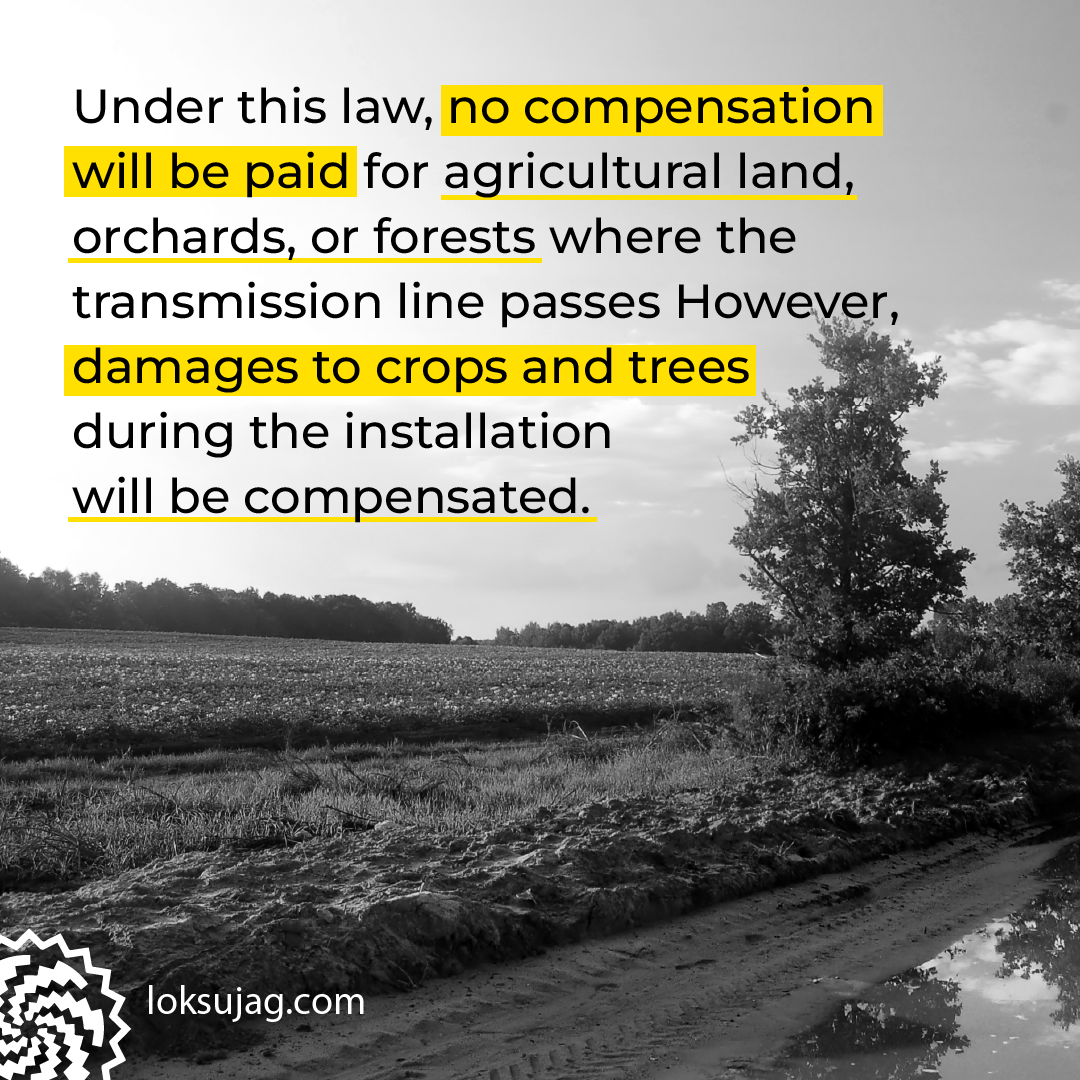
Wapda installations on local people’s property
According to the ‘resettlement plan’, the NTDC will not acquire land under the Land Acquisition Act for the transmission line; instead, it will impose the Telegraph Act of 1885 and the WAPDA Act of 1958 to use private land.
Under this law, no compensation will be paid for agricultural land, orchards, or forests where the transmission line passes. However, damages to crops and trees during the installation will be compensated. For the tower locations, the NTDC will pay Rs1.12m per tower but the land will remain the property of the current owners.
Official documents claim that public consultations, including those with women, were held to reach consensus on the compensation package and action plan. However, the situation in Basham indicates that people’s concerns have not been addressed.
Asif Khan, a resident of the village of Shing on the Karakoram Highway and a potential victim of the transmission line, denies any government meetings or consultations in the area before the recent survey. He is very angry at the situation.
“Wapda is acting like a bully, putting towers on our lands as if the entire Pakistan is its inheritance. Four lines already exist on my 100 kanal land and now the administration is pressuring us for more land.”
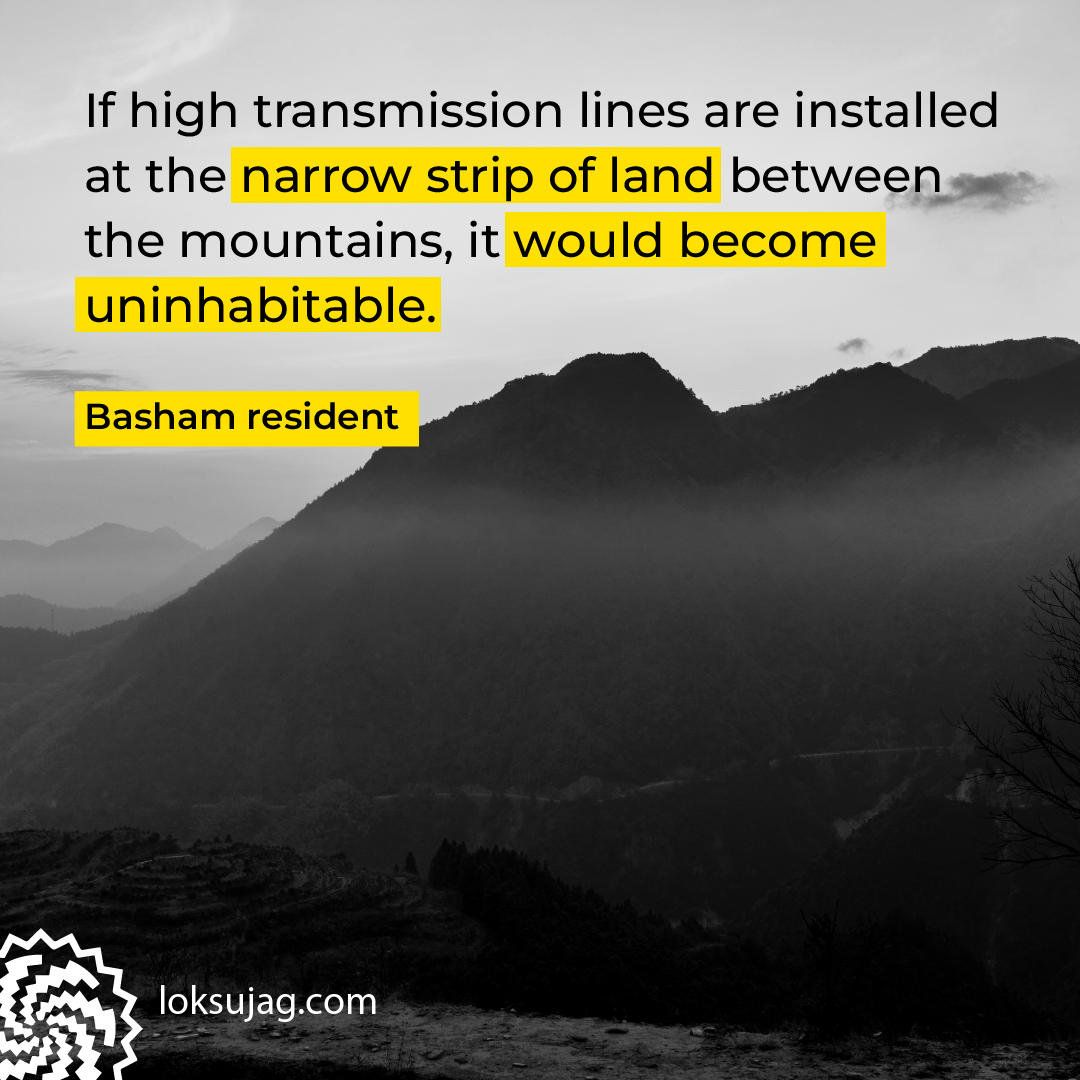
Fears for narrow mountain strip becoming uninhabitable
Haji Sadeedur Rahman, chairman of Basham Tehsil, explains that there is very little flat land in their tehsil, stretching from Chhota Lahore to Dandai. “Only a narrow strip of land, ranging from 50 to 100 kanal, remains along the river and the Karakoram Highway. He says electricity poles and wires are already scattered everywhere, with existing power lines for Kohistan and Basham, in addition to the Khan Khwar Hydropower Plant and Poran Grid. Now the government wants to install high transmission lines from Dasu and Diamer-Bhasha on these lands, making agricultural lands useless and rendering this strip uninhabitable, he adds.
“In our whole tehsil, some agriculture land is there only in two villages of Shing and Mirah which have orchards and crop fields,”
Ikhtiar Ali, a resident of Shing village, recounts that in 2010, a 72MW Khan Khwar transmission line was laid here. At that time, the NTDC also called the police and cut several guava plants from their orchard, installing huge towers and rendering the land useless forever.
“When registered our protest with the NTDC staff, they left the last wire between our house and fields loose, hanging only 15 feet above the ground.”
While showing a burnt tree in his guava and orange orchard, he says, “Whenever a tree grows above seven feet, there is an explosion, and it vanishes as if it never existed. Now, my land, worth millions, is not even worth Rs50,000 per kanal, because it can’t be used for farming or habitation. And Wapda has forcibly taken control of it.”

Electricity poles and wires spread like spider webs
Ikhtiar Ali says that electricity poles and wires have spread across the land on the land of his cousins like a spider’s web. He says angrily that it is better to either kill the village residents of relocate the entire village before laying new lines.
A member of the local jirga, Afrak Khan, says his land already has six electricity towers. These lines are so dangerous that if one walks under them with a tester, it gives an electric shock. Farming is impossible under such conditions.
For the Dasu transmission line, it is necessary to install the towers away from residential and agricultural areas. Wapda must not only pay full compensation for the land used for the towers but also carry out development projects in the area and free electricity to the affected people.
Tehsil chairman Rahman supports the jirga members’ demands, warning that if Wapda does not ensure proper compensation and provision of facilities, the people of Basham, like those in Kohistan, will take to the streets.
Last month, a similar protest was held in Lower Kohistan, demanding compensation for the affected families. The jirga leader, Maulana Karim Dad, was arrested, but after a week-long sit-in on the Karakoram Highway and negotiations, he was released. However, the jirga continues to issue ultimatums to Wapda.
Read this
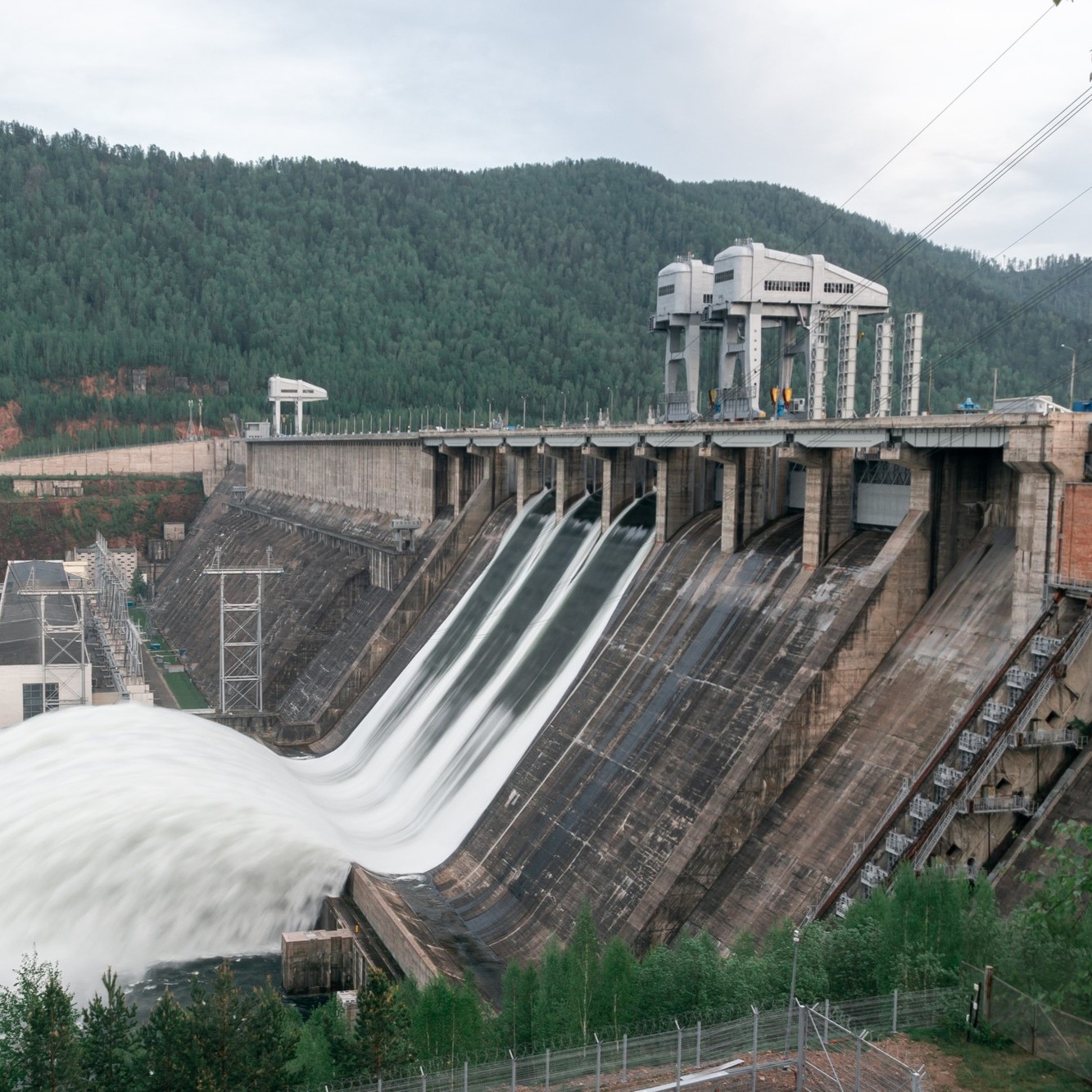
The broken promises of Kurram's Munda Dam: Barren fields, lost livelihoods, and an uncertain future
People determined to resist installation of towers
On Dec 9, the entire jirga of Basham tehsil called on the assistant commissioner, demanding that the Dasu transmission line be kept away from agricultural lands. The elders also warned that if their land is used without compensation, they would not allow any work to proceed.
Retired Captain Abbas Khan, another jirga member, asserts that this time, no towers will be allowed on residential and agricultural lands in Basham Tehsil. The people are united, and if their demands are not met, no work will be allowed.
Assistant Commissioner Adnan Khan says that further meetings are planned regarding the transmission line but some individuals are conspiring against the national interests.
However, Deputy Commissioner of Shangla, Muhammad Fawad Khan, explains that this time, the towers will be installed in the mountains, away from the population. “The final survey report will determine the exact locations, and only then can they discuss the issue further.”
Tehsildar Irfan Khan, who works with NTDC, says that soil tests are being conducted at the tower sites and payments to the affected parties will be made once the installation work begins.
When asked about the matter, NTDC Executive Engineer Muhammad Azeem says that they are negotiating with the protesters and are trying to install the towers away from agricultural land. He hopes that the issue will be resolved soon.
“Work on the towers has not yet started in Shangla. However, the NTDC follows the policy at the Wapda at the central level and we just implement it.”
Published on 14 Jan 2025
